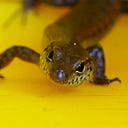Member-only story
Eleanor and the Butterfly
The 17th-century entomologist who gave her name to a rare species of butterfly
The Glanville Fritillary (Melitaea cinxia, Nymphalidae) lives on the edge.
Literally.
One of Britain’s rarest butterflies, it is found on coastal landslips and collapsed cliffs where its caterpillar host plant, Ribwort Plantain (Plantago lanceolata, Plantaginaceae), grows. It is most abundant (for very low values of abundance) on the Isle of Wight, with even smaller numbers occurring in chalk downs on the mainland. In the UK, it is just holding on by its tiny tarsi. Fortunately for the species, populations across the Channel are more robust. While it teeters in Britain, it thrives in Europe and Central Asia.
The butterfly’s common name commemorates the remarkable naturalist Eleanor Glanville.
Eleanor was born in 1654, three years after the end of the English Civil War. Her father, William Goodricke, had been a Roundhead officer, but received a pardon when Charles II was restored to the throne. Goodricke owned a swathe of estates in Somerset, including Tickenham Court, built in the 1400s. These properties came to Eleanor on her father’s death.
Butterflies were her fascination. She studied them, collected them, recorded their behaviour and…
